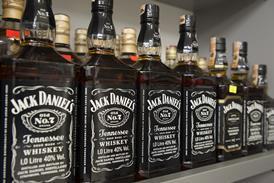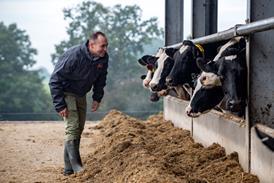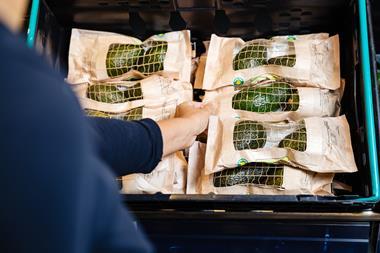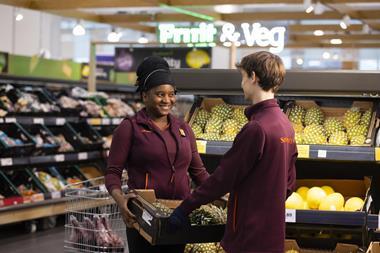Sainsbury is embarking on a radical mission to drive efficiency in the last 50 yards of its supply chain in a bid to improve on-shelf availability.
The Retek Store System, which will be piloted at the end of the year and rolled out across the estate in 2005, will apply the same sort of processes that are typically employed in a warehouse to the store backroom, said supply chain director Martin White.
“At the moment, rollcages arrive with a wodge of notes; there is no formal layout for the store backroom and a lack of consistency in the way goods are received, stored and put on the shopfloor. This will make the
back of store paperless, which will be far easier for colleagues.”
RSS will allow staff to scan in rollcages with handheld terminals when they arrive at the back door and prioritise those that need to go straight onto the shopfloor. It will also tell staff exactly where to put products that don’t need to go on the shelves yet, while each store backroom will have a formal layout like a depot.
On-shelf availability was not yet where it could be, said White. But Sainsbury was by no means the worst offender when it came to out of stocks:
“We had some availability blips in some categories as we installed new Retek store replenishment systems and we had to build in some buffer stock. But they haven’t affected all products or all stores.”
Commenting on the latest ECR UK on-shelf availability survey, he said, “we certainly weren’t bottom of the heap”.
New B2B tools including ECR scorecards and a collaborative performance management tool developed by online exchange GNX were also helping improve availability, he said.
These had enabled Sainsbury to identify and monitor specific KPIs, pinpoint problem areas, and create joint action plans to address them.
A collaborative logistics project with Kraft developed using ECR scorecards had delivered a 1.1% increase in on-shelf availability, a 3.8% boost to sales and a 12.5% reduction in wastage on chilled lines, according to White.
The project involved clearer branding on boxes to help staff identify Kraft products in store backrooms; spring-loaded shelf units, and more data-sharing between the two companies, he said. Separately, over 80 suppliers were now using the GNX collaborative tool, he added.
>>p34 Life in the chain gang
Elaine Watson
The Retek Store System, which will be piloted at the end of the year and rolled out across the estate in 2005, will apply the same sort of processes that are typically employed in a warehouse to the store backroom, said supply chain director Martin White.
“At the moment, rollcages arrive with a wodge of notes; there is no formal layout for the store backroom and a lack of consistency in the way goods are received, stored and put on the shopfloor. This will make the
back of store paperless, which will be far easier for colleagues.”
RSS will allow staff to scan in rollcages with handheld terminals when they arrive at the back door and prioritise those that need to go straight onto the shopfloor. It will also tell staff exactly where to put products that don’t need to go on the shelves yet, while each store backroom will have a formal layout like a depot.
On-shelf availability was not yet where it could be, said White. But Sainsbury was by no means the worst offender when it came to out of stocks:
“We had some availability blips in some categories as we installed new Retek store replenishment systems and we had to build in some buffer stock. But they haven’t affected all products or all stores.”
Commenting on the latest ECR UK on-shelf availability survey, he said, “we certainly weren’t bottom of the heap”.
New B2B tools including ECR scorecards and a collaborative performance management tool developed by online exchange GNX were also helping improve availability, he said.
These had enabled Sainsbury to identify and monitor specific KPIs, pinpoint problem areas, and create joint action plans to address them.
A collaborative logistics project with Kraft developed using ECR scorecards had delivered a 1.1% increase in on-shelf availability, a 3.8% boost to sales and a 12.5% reduction in wastage on chilled lines, according to White.
The project involved clearer branding on boxes to help staff identify Kraft products in store backrooms; spring-loaded shelf units, and more data-sharing between the two companies, he said. Separately, over 80 suppliers were now using the GNX collaborative tool, he added.
>>p34 Life in the chain gang
Elaine Watson



















No comments yet